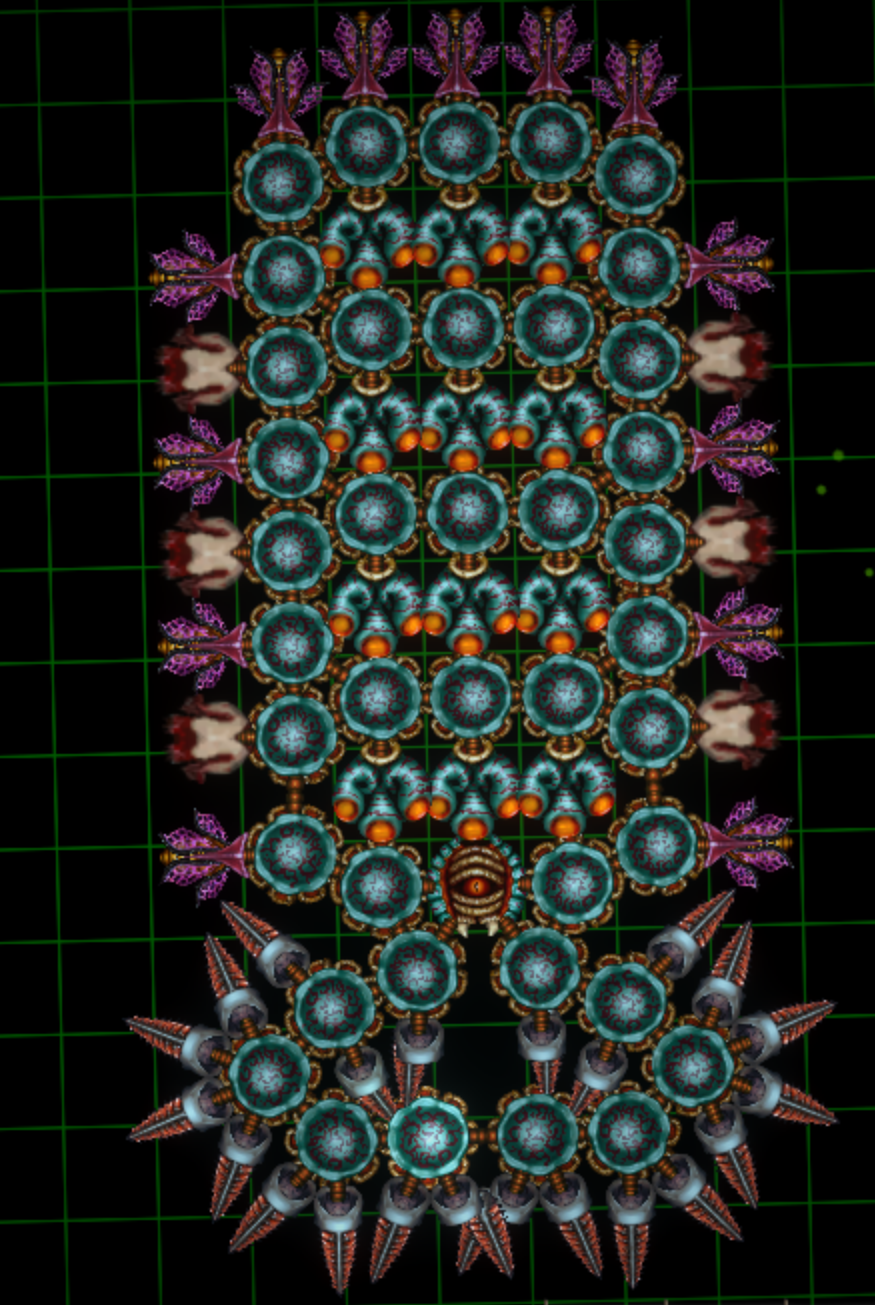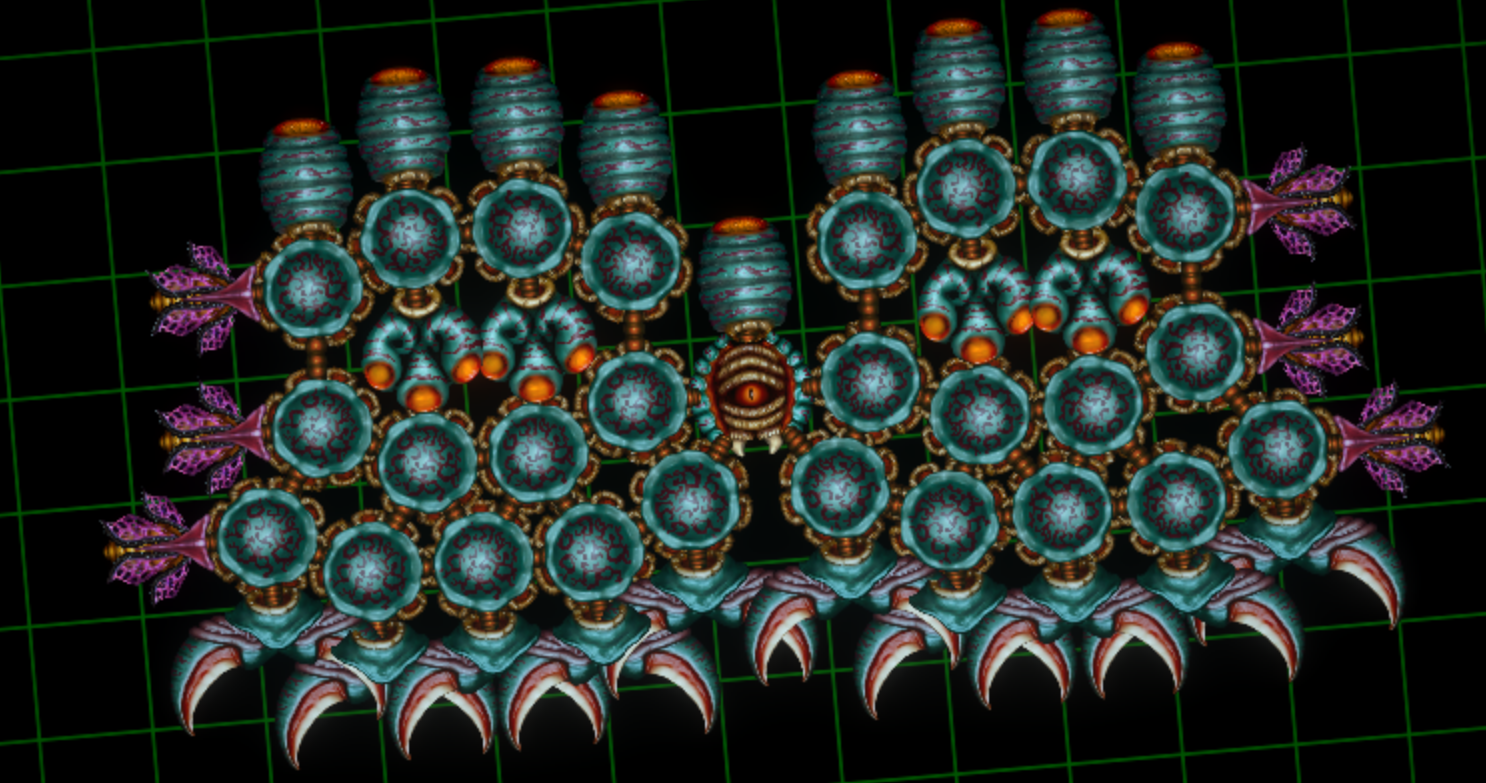I've managed to refine the Don Quixotting method of hunting with this creature here:

Nicknamed "Sledge-Hammerhead", its streamlined body houses 4 Don Quixote-Engine units (each consisting of 3 pusher-type Eater zooids and several Structure zooids) and is lined with rattler-type Swimmer zooids (as a turning mechanism and for smaller movements) and stunner-type Eater zooids (to stun any flanking enemies and to increase energy regeneration due to absurd energy consumption of the 4 aforementioned "Engines"). Its namesake comes from the biological battering ram that shields its head --- a far cry from previous Charger-type creatures that I've made discovered. It is significantly larger than most other charger weapon types, and boasts a unique "spring cushion" design (cushioned by more spikes?!) that acts as a sort of "insurance" for the creature in the event the front of the weapon breaks off. So far, that event has never come to fruition, as the design is thick enough to support itself on its own. Any wondering opponent in this thing's path is sure to experience a painful predicament --- provided they come out alive.


